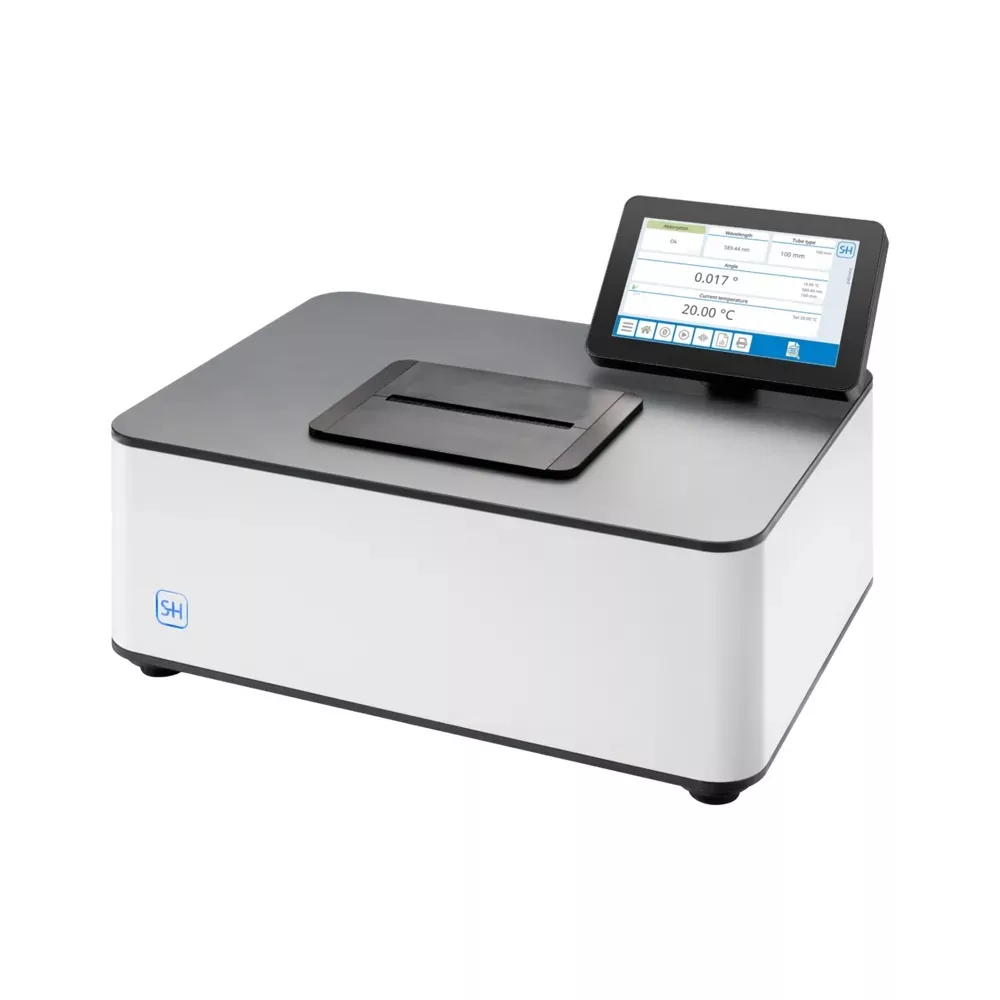Polarimeter: Precision Optical Rotation Measurement for Quality Control and Research
Polarimeter Schmidt Haensch VariPol B is a specialized scientific instrument used to measure the angle of rotation caused by passing polarized light through an optically active substance. It is widely used in pharmaceutical, chemical, food, and beverage industries, as well as academic and research laboratories. When high precision and repeatability are essential, a polarimeter provides reliable data for concentration analysis, purity testing, and chiral compound identification.
Whether you’re analyzing sugar content, verifying the enantiomeric purity of a compound, or conducting academic research, a polarimeter is your go-to tool for accurate optical rotation measurement.
What Is a Polarimeter?
A polarimeter measures the rotation of plane-polarized light as it passes through an optically active substance—typically a liquid or dissolved solid. The rotation angle depends on the chemical nature of the substance, its concentration, path length, wavelength of light, and temperature. By measuring this angle, users can determine the substance’s concentration or identify specific compounds, particularly chiral molecules.
How Does a Polarimeter Work?
-
Light Source: Typically a sodium or LED lamp emits monochromatic light.
-
Polarizer: Converts ordinary light into plane-polarized light.
-
Sample Tube: The sample is placed in a transparent tube between the polarizer and analyzer.
-
Analyzer/Detector: Measures the angle of rotation after the polarized light passes through the sample.
-
Display Unit: Shows the optical rotation angle, specific rotation, or concentration depending on the mode selected.
Key Features of a Modern Polarimeter
-
✅ High Measurement Accuracy
Accurate to ±0.01° or better, making it ideal for quality control in regulated industries. -
✅ Digital Display
Large, intuitive LCD or touchscreen interfaces simplify operations and reduce errors. -
✅ Multi-Wavelength Support
Some models offer multiple wavelengths to suit different compounds and applications. -
✅ Temperature Control
Built-in Peltier or external water-bath systems for precise temperature management. -
✅ USB and PC Connectivity
Export results directly to computers or LIMS for audit-ready documentation. -
✅ Auto Calibration and Zeroing
Increases efficiency and minimizes user-related inaccuracies.
Applications of a Polarimeter
| Industry | Use Case | Benefit |
|---|---|---|
| Pharmaceuticals | Check enantiomeric purity of APIs | Ensure drug safety and efficacy |
| Sugar Industry | Measure sucrose concentration | Confirm product quality and Brix |
| Food & Beverage | Analyze sweeteners and flavor compounds | Maintain consistency and compliance |
| Chemical Manufacturing | Identify and quantify optically active substances | Guarantee batch consistency |
| Academia & Research | Study chiral molecules and reactions | Support advanced chemical research |
Types of Polarimeters
-
Manual Polarimeter
Requires the user to visually align the analyzer; suitable for educational and basic applications. -
Digital Polarimeter
Provides automatic readings with high precision; ideal for professional laboratories. -
Micro Polarimeter
Designed for small-volume samples; commonly used in pharmaceutical research. -
High-Sensitivity Polarimeter
Offers enhanced resolution and stability for detecting low-rotation samples.
Benefits of Using a Polarimeter
-
🎯 Accurate and Repeatable: Delivers consistent results for sensitive analytical work.
-
⏱ Fast Measurements: Obtain readings in seconds with digital models.
-
🔬 Non-Destructive Analysis: Samples remain intact and unchanged after testing.
-
📈 Versatile Applications: Useful across diverse industries and research fields.
-
🔒 Regulatory Compliance: Essential for GMP, FDA, and ISO documentation in pharmaceutical and food production.
Tips for Choosing the Right Polarimeter
-
Accuracy and Resolution Needs
Choose based on your industry’s precision requirements. -
Sample Volume and Path Length
Ensure the polarimeter is compatible with your sample sizes. -
Wavelength Options
Verify which wavelengths are needed for your compounds (e.g., 589 nm for sucrose). -
Temperature Control
For sensitive compounds, temperature regulation is critical for accurate readings. -
Data Output Capabilities
USB, printer, or software integration may be necessary for documentation and QA.
Conclusion
A polarimeter is an indispensable instrument for laboratories and industries that require accurate measurement of optical activity. Whether you’re verifying product purity, conducting pharmaceutical research, or testing food ingredients, a polarimeter helps ensure quality, compliance, and scientific integrity.
Invest in a reliable, user-friendly polarimeter to enhance your analytical capabilities and deliver trusted results—every time.





Reviews
There are no reviews yet.